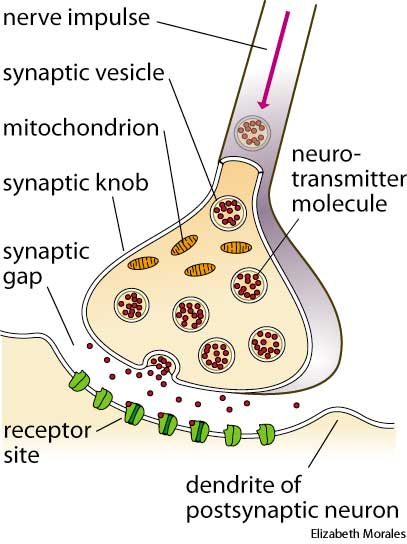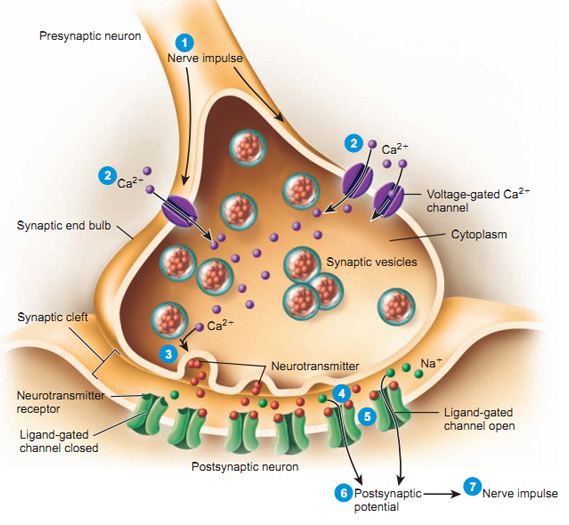Why is a chemical synaptic transmission unidirectional? Does calcium open up Ca+ channels in the bulb and Ca+ rushes in and allows for neurotransmitters to enter?
1 Answer
Synaptic transmission is undirectional because neurotransmitters cannot be exchanged otherwise.
Explanation:
A synapse is a link between two neurons in our bodies. The synapse is showed schematically below.

A synapse has a side which releases neurotransmitters and a side that can receive them. When a signal travels towards such a synapse, these neurotransmitters are released in the synaptic gap and can travel free around. If such a neurotransmitter is bonded to a receptor on the other site of the synaptic gap, this releases another signal which travels further and further in our body.
We see now, that these neurotransmitters cannot cause a signal to go backwards. The receptor site cannot release them and the synaptic knob cannot receive them.
For your interest, neurotransmitters are mostly broken down in the synaptic gap after they are released, so another signal can come through!
There are two types of effects caused by neurotransmitters: excitation and inhibition. Inhibition is when a molecule lowers the potential to create a new electrical signal and excitation is when a molecule raises the potential to create a new electrical signal output.
Why is it important to have a unidirectional unit in our nerve system?
This is because all the other neurons do not have a specific direction. Image what a chaos would be created if everything gets triggered and triggered because there is no way you can stop a signal!
What has calcium to do with this?
Calcium is part of the system that releases the neurotransmitters in the synaptic cleft. If an electric signal reaches the synapse, membrane ports are put open and calcium is transferred into the synapse, creating a high concentration inside (see image below). Specific proteins on the membrane of the neurotransmitter carrier (the bubbles) react on this higher concentration and fuse with the cell membrane, releasing the neurotransmitters in the synaptic cleft.

